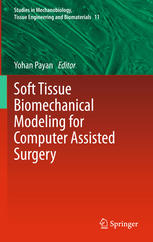

Most ebook files are in PDF format, so you can easily read them using various software such as Foxit Reader or directly on the Google Chrome browser.
Some ebook files are released by publishers in other formats such as .awz, .mobi, .epub, .fb2, etc. You may need to install specific software to read these formats on mobile/PC, such as Calibre.
Please read the tutorial at this link: https://ebookbell.com/faq
We offer FREE conversion to the popular formats you request; however, this may take some time. Therefore, right after payment, please email us, and we will try to provide the service as quickly as possible.
For some exceptional file formats or broken links (if any), please refrain from opening any disputes. Instead, email us first, and we will try to assist within a maximum of 6 hours.
EbookBell Team

0.0
0 reviewsThis volume focuses on the biomechanical modeling of biological tissues in the context of Computer Assisted Surgery (CAS). More specifically, deformable soft tissues are addressed since they are the subject of the most recent developments in this field. The pioneering works on this CAS topic date from the 1980's, with applications in orthopaedics and biomechanical models of bones. More recently, however, biomechanical models of soft tissues have been proposed since most of the human body is made of soft organs that can be deformed by the surgical gesture. Such models are much more complicated to handle since the tissues can be subject to large deformations (non-linear geometrical framework) as well as complex stress/strain relationships (non-linear mechanical framework).
Part 1 of the volume presents biomechanical models that have been developed in a CAS context and used during surgery. This is particularly new since most of the soft tissues models already proposed concern Computer Assisted Planning, with a pre-operative use of the models. Then, the volume addresses the two key issues raised for an intra-operative use of soft tissues models, namely (Part 2) “how to estimate the in vivo mechanical behavior of the tissues?” (i.e. what are the values of the mechanical parameters that can deliver realistic patient-specific behavior?) and (Part 3) “how to build a modeling platform that provides generic real-time (or at least interactive-time) numerical simulations?”